The significance of places in the Bible

This is the index to a series of blog posts on places in the Bible. They are listed as places in Israel followed by places outside Israel.
PLACES INSIDE ISRAEL
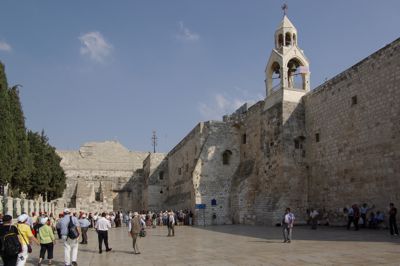 Bethlehem, God’s solution to our crises
Bethlehem, God’s solution to our crises
At Bethlehem God provided a solution to a family crisis, and a national crisis and a global crisis. What about our personal crisis? (more…)
Global evidence for Noah’s flood

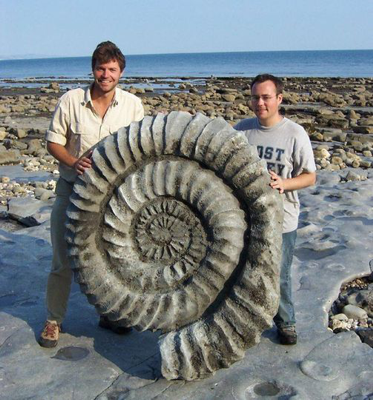
Everywhere you look you can see evidence for the global Flood of Noah’s time, but most don’t recognize it. That’s because they don’t know what to look for.
This blogpost is a summary of six main points that were made by Dr Tasman Walker in a presentation on “Global evidence of Noah’s flood”.
What would we expect to find on earth if there was a global flood as described in Genesis chapters 6-8 in the Bible? (more…)
Enemies and ungodliness at Gaza

 In October 2023 Hamas terrorists from Gaza attacked Israel killing about 1,200 people and taking about 240 hostage, including babies, children, women and the elderly. Since then in an attempt to destroy Hamas, Israel has attacked Gaza and killed thousands of people. So there is war between Israel and Hamas at Gaza. (more…)
In October 2023 Hamas terrorists from Gaza attacked Israel killing about 1,200 people and taking about 240 hostage, including babies, children, women and the elderly. Since then in an attempt to destroy Hamas, Israel has attacked Gaza and killed thousands of people. So there is war between Israel and Hamas at Gaza. (more…)
Prophecies about Jesus: He will preach good news

 I have some good news and some bad news. Yesterday, the Tigers (rugby league) won, but the Matilda’s (soccer) lost. Most people prefer to hear the bad news first because we prefer stories with happy endings. But bad news dominates in our news media because it gets higher ratings. The Good News Network was founded in USA in 1997 because the media was failing to report the positive news. (more…)
I have some good news and some bad news. Yesterday, the Tigers (rugby league) won, but the Matilda’s (soccer) lost. Most people prefer to hear the bad news first because we prefer stories with happy endings. But bad news dominates in our news media because it gets higher ratings. The Good News Network was founded in USA in 1997 because the media was failing to report the positive news. (more…)
Peter’s hills and valleys

 Simon Peter lived in the Middle East between about 1 BC and AD 67. There is an account of his life in Matthew to John and Acts 1-15 of the Bible. Peter was the main preacher to the Jews in the early church. And he wrote the letters 1 Peter and 2 Peter in the New Testament. The major hills and valleys in his life are shown in the graph – the lower graph follows the upper one. (more…)
Simon Peter lived in the Middle East between about 1 BC and AD 67. There is an account of his life in Matthew to John and Acts 1-15 of the Bible. Peter was the main preacher to the Jews in the early church. And he wrote the letters 1 Peter and 2 Peter in the New Testament. The major hills and valleys in his life are shown in the graph – the lower graph follows the upper one. (more…)
King Saul’s hills and valleys

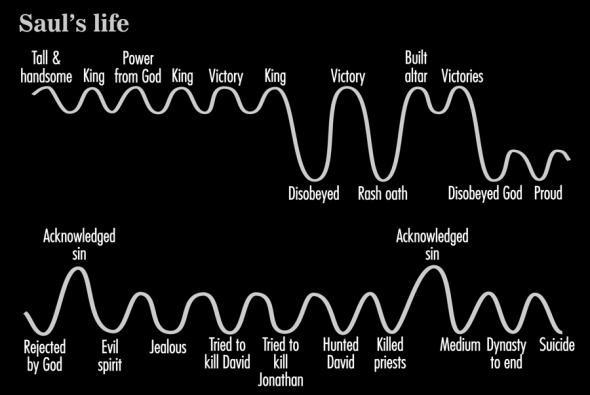 Saul was the first king over Israel. He lived in the 11th century BC. There is an account of his life in 1 Samuel 9-31 of the Bible. The main hills and valleys in his life are shown in the graph – the lower graph follows the upper one. (more…)
Saul was the first king over Israel. He lived in the 11th century BC. There is an account of his life in 1 Samuel 9-31 of the Bible. The main hills and valleys in his life are shown in the graph – the lower graph follows the upper one. (more…)
Solomon’s hills and valleys

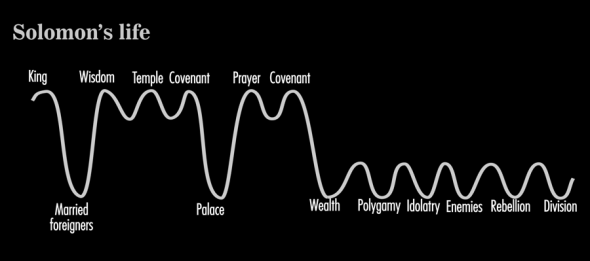 Solomon was the third king over Israel. He lived in the 10th century BC. There is an account of his life in 1 Kings 1-11 and 1 Chronicles 29:21 to 2 Chronicles 9:31 of the Bible. And Solomon wrote Proverbs, Ecclesiastes, and Song of Songs. The main hills and valleys in his life are shown in the graph. (more…)
Solomon was the third king over Israel. He lived in the 10th century BC. There is an account of his life in 1 Kings 1-11 and 1 Chronicles 29:21 to 2 Chronicles 9:31 of the Bible. And Solomon wrote Proverbs, Ecclesiastes, and Song of Songs. The main hills and valleys in his life are shown in the graph. (more…)
Joshua’s hills and valleys

Joshua assisted Moses during the exodus of the Israelites from Egypt to Canaan (Ex. 24:13; 33:11; Num. 11:28). So during this time period he experienced the same hills and valleys as Moses. When Moses died outside the promised land after he viewed it from Mount Nebo (Dt. 34:1-7), Joshua replaced him as the leader of the Israelites (Dt. 31:1-8). Joshua lived in the 15th century BC. There is an account of his life from Exodus 17 to Joshua 24 of the Bible.
During the exodus
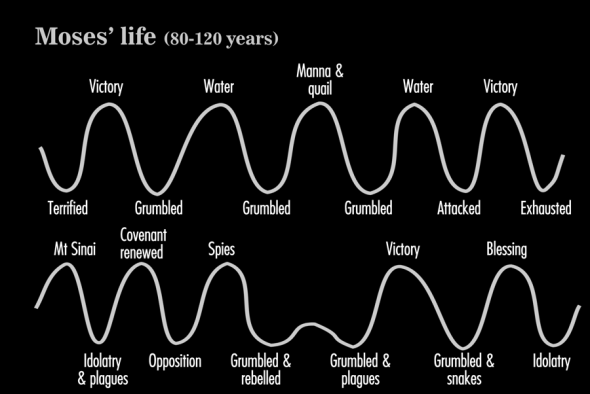
Samuel’s hills and valleys

 Samuel was God’s representative in Israel in the transition from the rule of the judges to that of the monarchy. He lived in the 11th century BC as a Nazarite (like Samson and John the Baptist) dedicated to serving the Lord (Num. 6:1-12; 1 Sam. 1:11). There is an account of his life in 1 Samuel 1-28 of the Bible. The main hills and valleys in his life are shown in the graph. (more…)
Samuel was God’s representative in Israel in the transition from the rule of the judges to that of the monarchy. He lived in the 11th century BC as a Nazarite (like Samson and John the Baptist) dedicated to serving the Lord (Num. 6:1-12; 1 Sam. 1:11). There is an account of his life in 1 Samuel 1-28 of the Bible. The main hills and valleys in his life are shown in the graph. (more…)
How to develop resilience

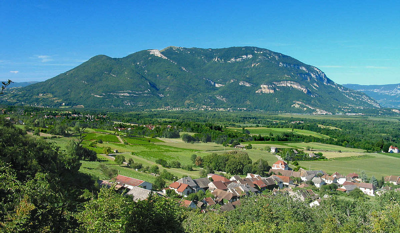 Last Friday was Bastille Day – the National Day of France. It was also the day when the Tour de France climbed Grand Colombier in the Jura Mountains. This is a brutal climb of over 1,240 m in elevation over 17.4 km at a gradient of 7.1%. The final 3.4 km rises at 9.2%. When we visited there last year, they were filming a promotional video for the Tour. (more…)
Last Friday was Bastille Day – the National Day of France. It was also the day when the Tour de France climbed Grand Colombier in the Jura Mountains. This is a brutal climb of over 1,240 m in elevation over 17.4 km at a gradient of 7.1%. The final 3.4 km rises at 9.2%. When we visited there last year, they were filming a promotional video for the Tour. (more…)
Paul’s hills and valleys

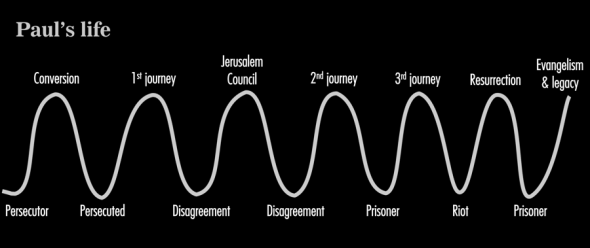 Paul lived in the Middle East between about 5 BC and AD 68. There is an account of his life in Acts 7-28 of the Bible. And Paul wrote many of the letters in the New Testament. The major hills and valleys in his life are shown in the graph. (more…)
Paul lived in the Middle East between about 5 BC and AD 68. There is an account of his life in Acts 7-28 of the Bible. And Paul wrote many of the letters in the New Testament. The major hills and valleys in his life are shown in the graph. (more…)
Elisha’s hills and valleys

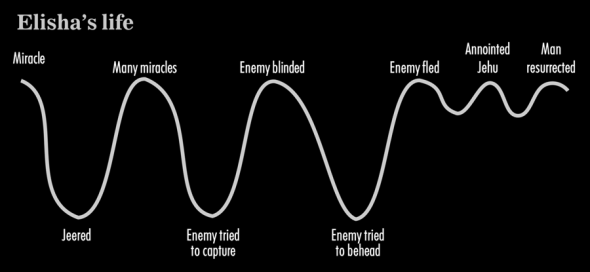 Elisha was the prophet to Israel after Elijah. He lived in the 9th century BC. There is an account of his life in 1 Kings 19 to 2 Kings 13 of the Bible. The hills and valleys in his life are shown in the graph. (more…)
Elisha was the prophet to Israel after Elijah. He lived in the 9th century BC. There is an account of his life in 1 Kings 19 to 2 Kings 13 of the Bible. The hills and valleys in his life are shown in the graph. (more…)
Elijah’s hills and valleys

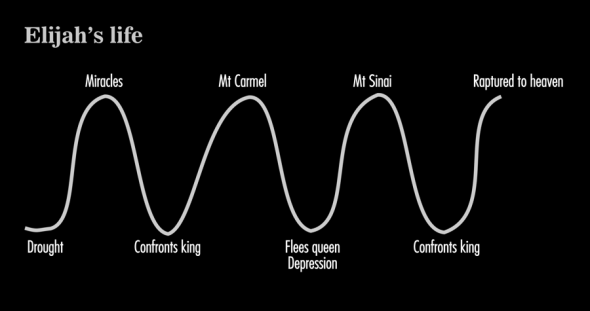 Elijah was a prophet to Israel from 900 BC to 849 BC. There is an account of his life in 1 Kings 17 to 2 Kings 2 of the Bible. The hills and valleys in his life are shown in the graph. (more…)
Elijah was a prophet to Israel from 900 BC to 849 BC. There is an account of his life in 1 Kings 17 to 2 Kings 2 of the Bible. The hills and valleys in his life are shown in the graph. (more…)
David’s hills and valleys

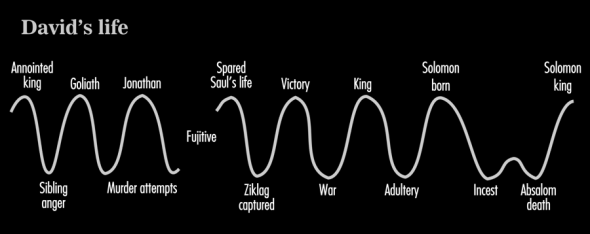 David lived in the Middle East about 3,000 years ago. There is an account of his life in 1 Samuel 16 to 1 Kings 2 and in 1 Chronicles 11-29 of the Bible. And David wrote many of the Psalms. The hills and valleys in his life are shown in the graph. (more…)
David lived in the Middle East about 3,000 years ago. There is an account of his life in 1 Samuel 16 to 1 Kings 2 and in 1 Chronicles 11-29 of the Bible. And David wrote many of the Psalms. The hills and valleys in his life are shown in the graph. (more…)
Moses’ hills and valleys

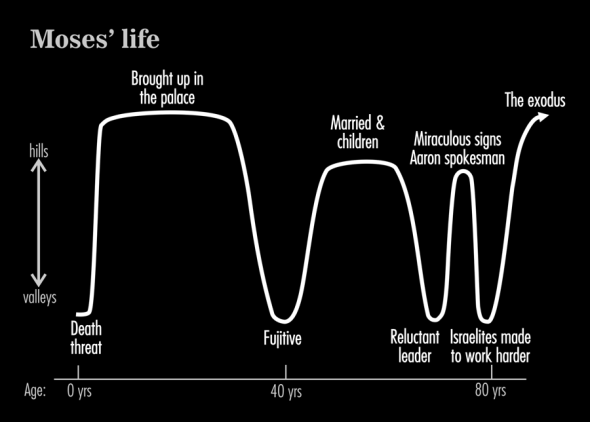 After about 200 hundred years in Egypt, the Israelites multiplied so greatly that the Egyptians felt threatened and put slave masters over them and used them as laborers. Pharaoh issued an order that every Hebrew boy that was born was to be drowned in the river Nile. It was a dangerous time for Moses to be born. Moses lived in the 15th century BC. There is an account of his life from Exodus 2 to Deuteronomy 34 of the Bible. The hills and valleys in the first 80 years of his life are shown in the graph. (more…)
After about 200 hundred years in Egypt, the Israelites multiplied so greatly that the Egyptians felt threatened and put slave masters over them and used them as laborers. Pharaoh issued an order that every Hebrew boy that was born was to be drowned in the river Nile. It was a dangerous time for Moses to be born. Moses lived in the 15th century BC. There is an account of his life from Exodus 2 to Deuteronomy 34 of the Bible. The hills and valleys in the first 80 years of his life are shown in the graph. (more…)
Joseph’s hills and valleys

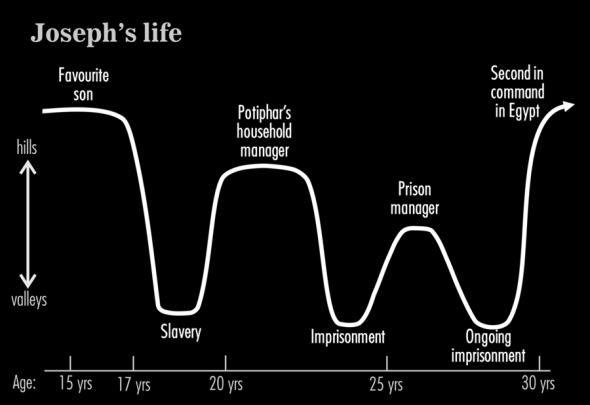 Joseph was born about 3,900 years ago. There is an account of his life in Genesis 30-50 of the Bible. The hills and valleys in the first 30 years of his life are shown in the graph, which goes up for hills and down for valleys. (more…)
Joseph was born about 3,900 years ago. There is an account of his life in Genesis 30-50 of the Bible. The hills and valleys in the first 30 years of his life are shown in the graph, which goes up for hills and down for valleys. (more…)
Godliness and wickedness at Beersheba

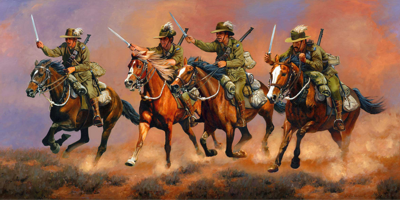 The city of Beersheba in Palestine was captured by the British-led Australian Light Horse in the Battle of Beersheba during World War I (Appendix A). It was the last successful cavalry charge in military history. Approximately 800 Australian soldiers with only horses and bayonets, charged the Turkish trenches, overran them and captured the wells. (more…)
The city of Beersheba in Palestine was captured by the British-led Australian Light Horse in the Battle of Beersheba during World War I (Appendix A). It was the last successful cavalry charge in military history. Approximately 800 Australian soldiers with only horses and bayonets, charged the Turkish trenches, overran them and captured the wells. (more…)
Log rafts, geology and migration

 One of New South Wales’ main inland rivers is being choked with woody logs and other floating debris after unprecedented flooding. Several large rafts made of wood and other debris are blocking parts of the Macquarie River in the state’s west. Logjams like these are a natural phenomena on rivers, often after flooding. Willow logs are creating many of the blockages as willows float and then bind together to form rafts bridging from one bank of the river to the other. The longest raft is about 130-metres long, with thick vegetation growing on it since it has been there for months. (more…)
One of New South Wales’ main inland rivers is being choked with woody logs and other floating debris after unprecedented flooding. Several large rafts made of wood and other debris are blocking parts of the Macquarie River in the state’s west. Logjams like these are a natural phenomena on rivers, often after flooding. Willow logs are creating many of the blockages as willows float and then bind together to form rafts bridging from one bank of the river to the other. The longest raft is about 130-metres long, with thick vegetation growing on it since it has been there for months. (more…)
Good times and bad times at Shechem

 What can we learn from history? The Bible says that it was written for our instruction (Rom. 15:4; 1 Tim. 3:16). It gives us examples to follow and examples to avoid (1 Cor. 10:6, 11). And it can give us confidence from God.
What can we learn from history? The Bible says that it was written for our instruction (Rom. 15:4; 1 Tim. 3:16). It gives us examples to follow and examples to avoid (1 Cor. 10:6, 11). And it can give us confidence from God.
The city of Shechem was in a valley between Mount Ebal and Mount Gerizim in central Israel, 55 km (35 miles) north of Jerusalem and 11 km (7 miles) southeast of Samaria. It was strategically located on the main road through the central hill country of Palestine “(the way of the Patriarchs”, or “the Ridge route”). But it had no natural defenses and required extensive fortification. Shechem was a very ancient commercial center due to its position in the middle of vital trade routes through the region. (more…)
Jesus put Nazareth on the map

 Raised by a single mother in a New York City housing project, Ursula Burns worked hard at school. After graduating from high school, she earned a master’s degree in mechanical engineering. She worked as an intern at printing company Xerox, before being hired permanently. She rose through the ranks to become CEO in 2007-2016, earning the distinction of being the first black woman to lead a Fortune 500 company. So her background didn’t limit her career.
Raised by a single mother in a New York City housing project, Ursula Burns worked hard at school. After graduating from high school, she earned a master’s degree in mechanical engineering. She worked as an intern at printing company Xerox, before being hired permanently. She rose through the ranks to become CEO in 2007-2016, earning the distinction of being the first black woman to lead a Fortune 500 company. So her background didn’t limit her career.
A change in status
Nazareth was a small farming village between the sea of Galilee and the Mediterranean Sea. In about AD 30 when Nathanael was told that Jesus was from Nazareth he asked, “Can anything good come from there” (Jn. 1:46NIV). But why did Nathanael say this? Was Nazareth insignificant, isolated, remote and outside the mainstream of Jewish life? Were most of the people poor? Or was his skepticism, scorn and derision inter-town rivalry – Nathanael was from Cana (6km north of Nazareth)? (more…)
The benefits of Christianity

 The media generally presents a negative picture of Christianity. But what does history tell us?
The media generally presents a negative picture of Christianity. But what does history tell us?
Despite its humble origins, Christianity has made more changes on earth for good than any other movement or force in history. To get an overview of some of the positive contributions it has made through the centuries, here are a few highlights (Kennedy and Newcombe, 1994): (more…)
Biblical geology

 This post comes from a book by Oard and Carter (2021).
This post comes from a book by Oard and Carter (2021).
Biblical geology is much more sophisticated than skeptics both inside and outside of Christianity assert. Over 60 years of research, often published in technical journals as well as popular books and magazines, have produced an impressive body of evidence. Sloppy examination of creation science, and their biases, often cause secular scientists, old-earth creationists, and theistic evolutionists to grossly misrepresent the nature of the debate and the quality of evidence supporting the historic Christian view. (more…)
The Bible is for our time, but not about our time

 This post comes from Michael Bird, a theologian who lives in Melbourne, Australia.
This post comes from Michael Bird, a theologian who lives in Melbourne, Australia.
The Bible is for us. It is the principal source for how to believe and behave as disciples of Jesus Christ. The Bible exists for us to have a God-centered view of creation, to understand God’s providence in history, to hear God’s promises, to know God’s words of warning and encouragement, to have the words of Jesus, to hear the apostles’ testimony about Jesus, and to look ahead to the kingdom in all its future fullness. The private and public reading of the Bible is for us in the sense that it is for our training, our edification, our transformation, and our encouragement. The Bible is for us since the Bible enables God to speak to people across the tide of history, through our manifold cultures and languages, and in a way that truly transcends human differences. Whether you are a second-century Christian in Rome, a fifth-century Arab Christian in the city of Tikrit, or a twenty-first-century believer in Zimbabwe, the Bible is God’s word for you, for them, and for us today. The Bible is for us, yesterday, today, and until the end of the age. (more…)



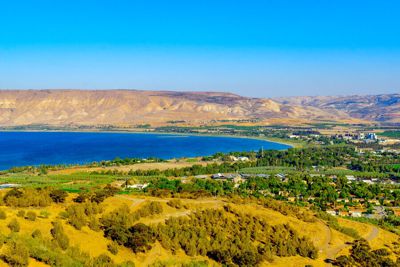 Light is defined as the electromagnetic radiation with wavelengths between 380 and 750 nm, which is visible to the human eye. This light is a source of illumination. And sunlight provides the energy that green plants use to create sugars mostly in the form of starches, which release energy into the living things that digest them. This process of photosynthesis provides virtually all the energy used by living things. Darkness is the absence of visible light.
Light is defined as the electromagnetic radiation with wavelengths between 380 and 750 nm, which is visible to the human eye. This light is a source of illumination. And sunlight provides the energy that green plants use to create sugars mostly in the form of starches, which release energy into the living things that digest them. This process of photosynthesis provides virtually all the energy used by living things. Darkness is the absence of visible light. 



RECENT COMMENTS